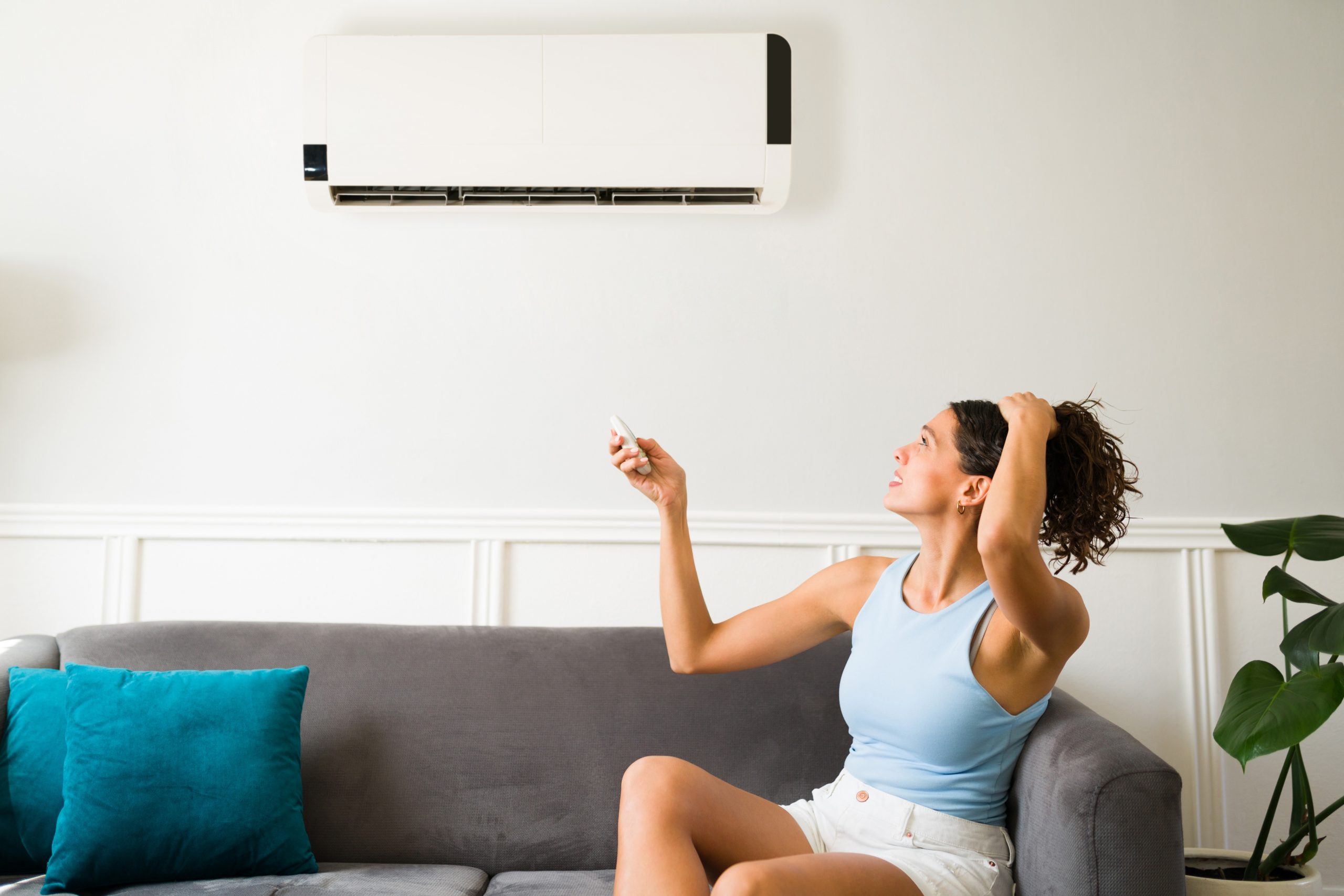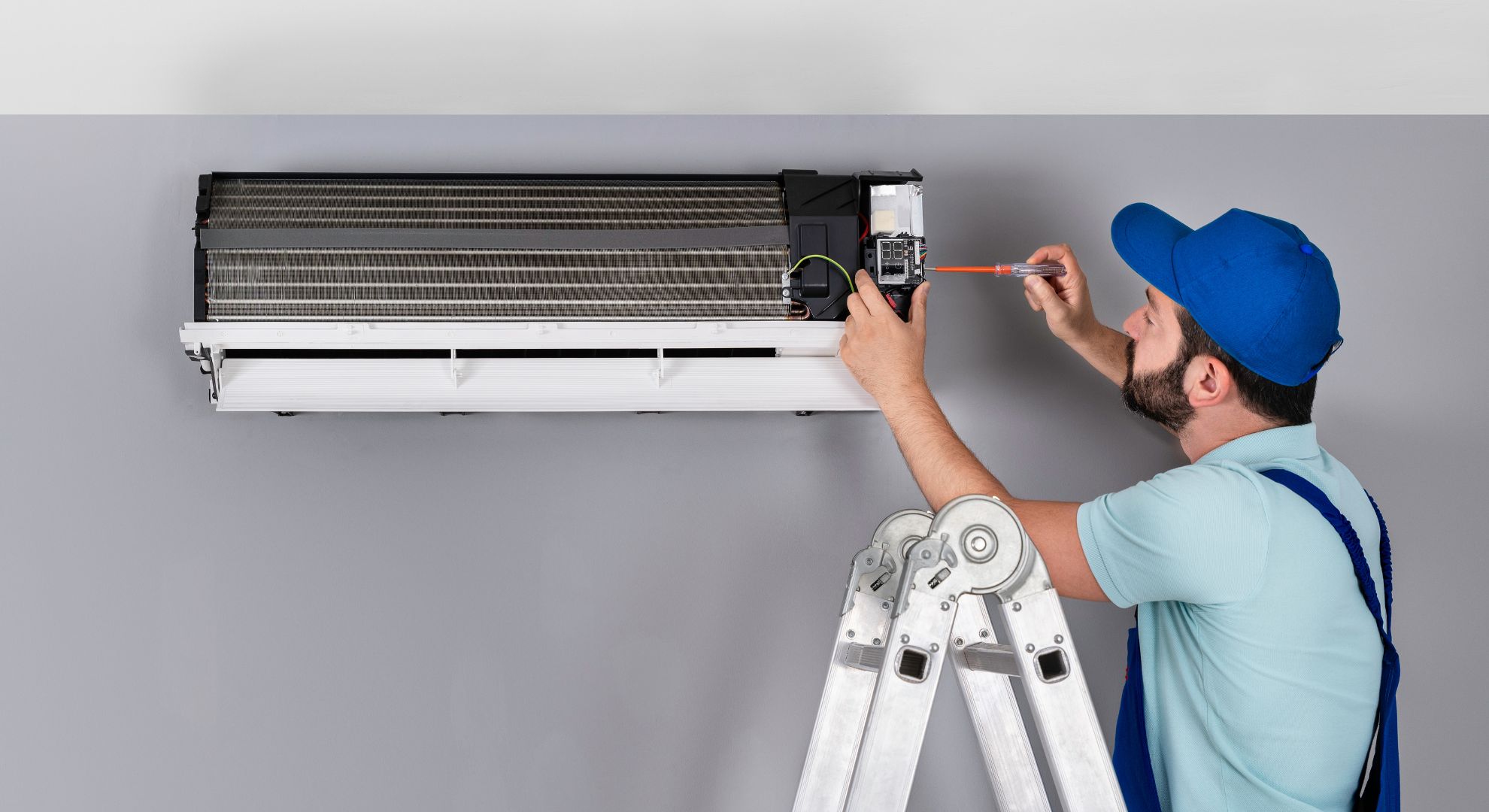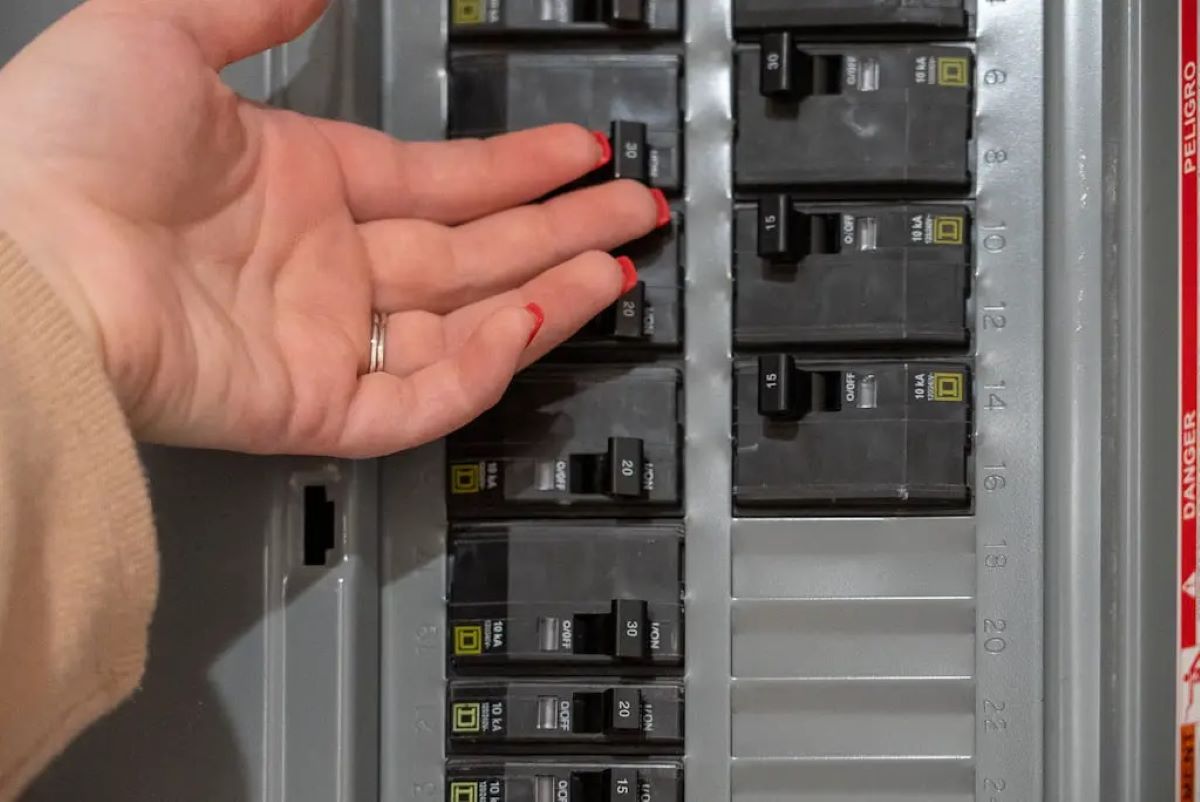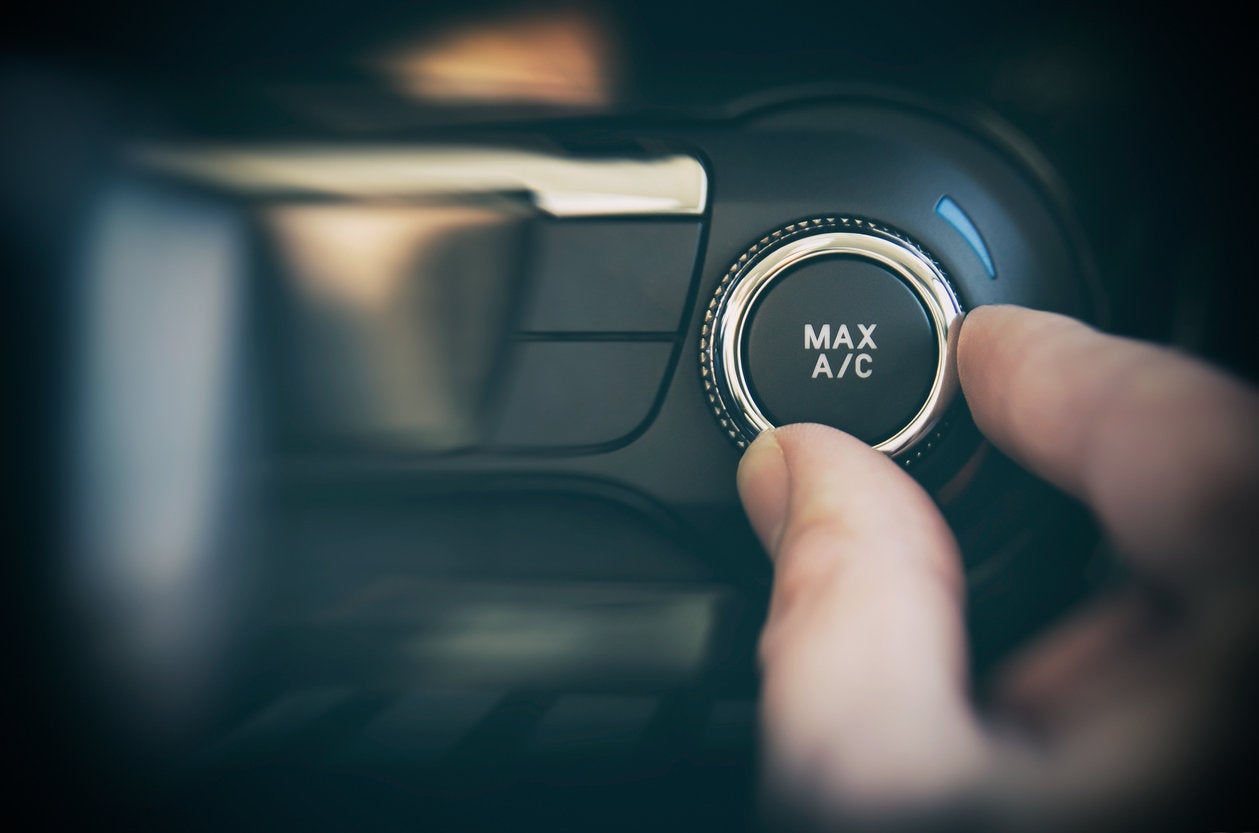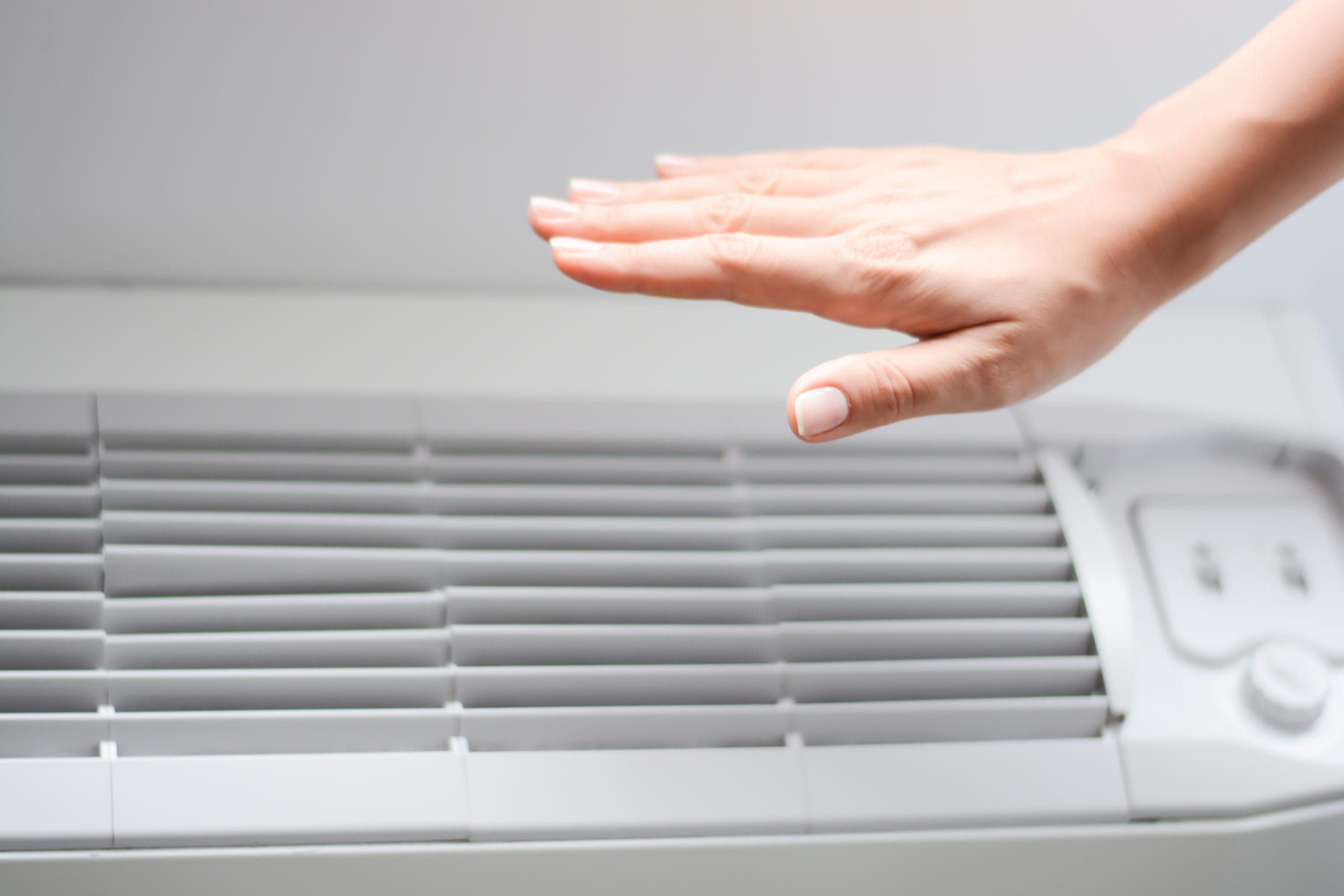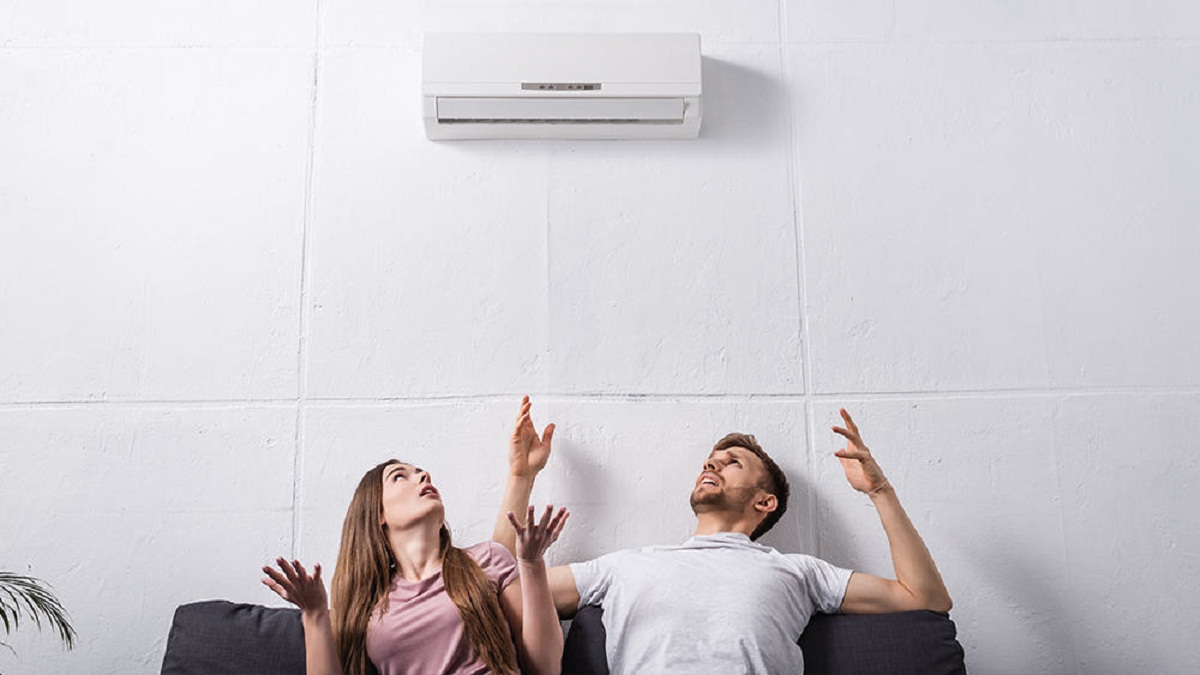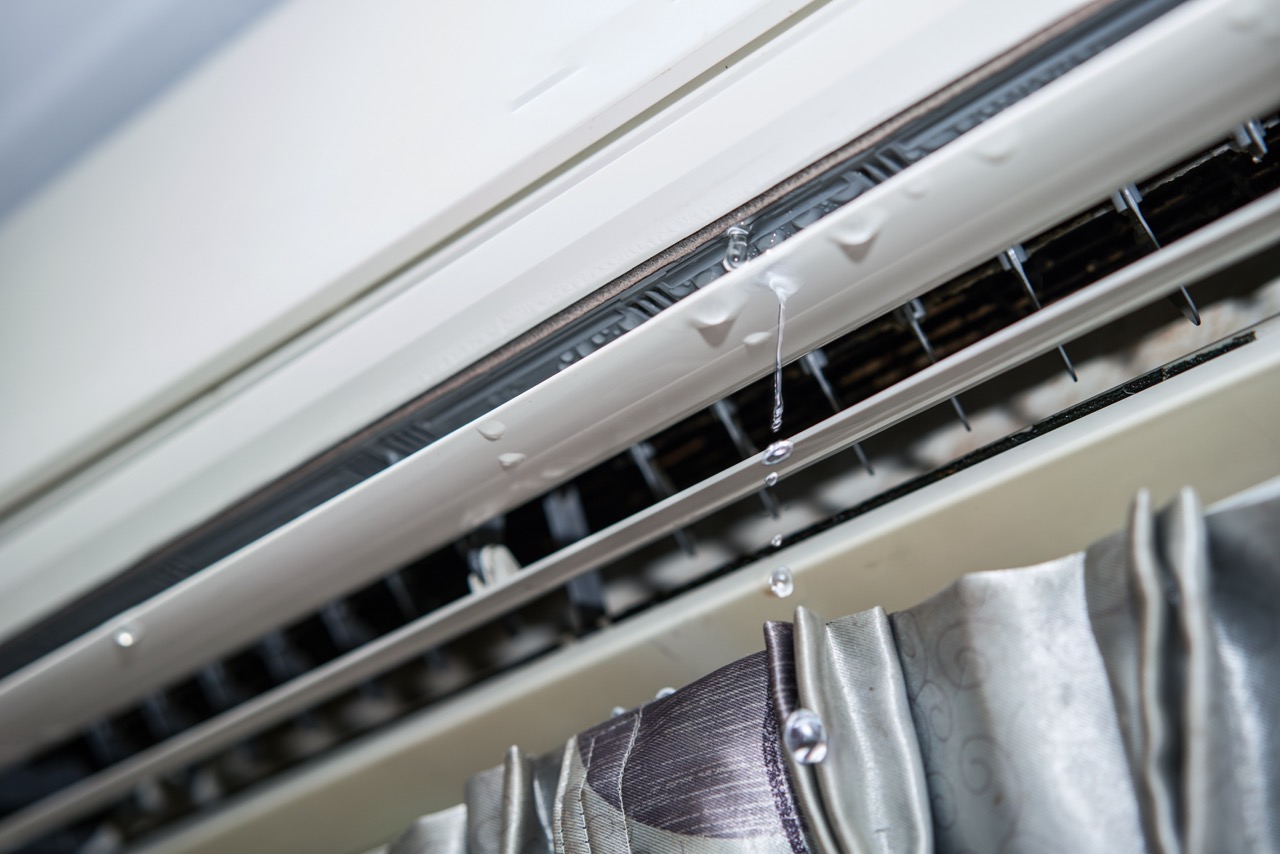Home>Home Maintenance>Why Is My Air Conditioning Blowing Hot Air
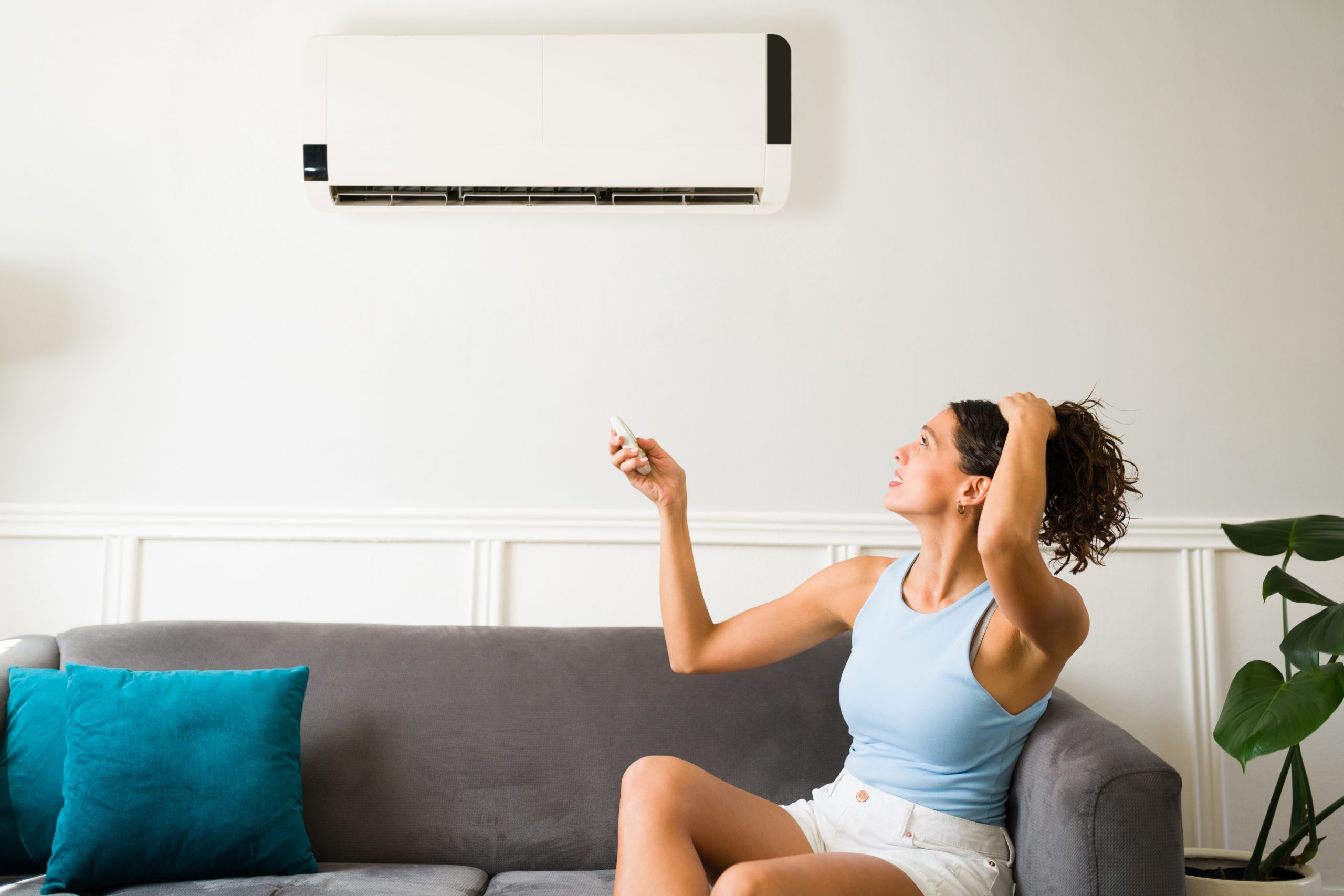

Home Maintenance
Why Is My Air Conditioning Blowing Hot Air
Modified: March 6, 2024
Experiencing hot air from your air conditioning? Find out the reasons and solutions in our comprehensive guide to home maintenance.
(Many of the links in this article redirect to a specific reviewed product. Your purchase of these products through affiliate links helps to generate commission for Storables.com, at no extra cost. Learn more)
Introduction
Welcome to the world of home maintenance! If you’re here, chances are you’re experiencing the frustrating issue of your air conditioning blowing hot air. Don’t worry, you’re not alone. Many homeowners have encountered this problem at some point, and luckily, there are several common reasons why this might be happening.
In this article, we will explore the most common causes of air conditioning units blowing hot air and provide you with insights into how you can troubleshoot and resolve these issues. By understanding the underlying factors that lead to hot air instead of cool comfort, you’ll be better equipped to tackle the problem head-on and get your AC system back to its chilling best.
Before we dive into the details, it’s important to note that while this article provides general troubleshooting tips, it’s always recommended to consult a professional HVAC technician for a comprehensive diagnosis and repair.
Key Takeaways:
- Keep your AC blowing cool air by checking and maintaining proper refrigerant levels, cleaning or replacing air filters, and ensuring the condenser unit is free from blockages. Regular maintenance is key to a comfortable home.
- If your AC is blowing hot air, it could be due to low refrigerant, dirty filters, a faulty thermostat, or a blocked condenser. Regular cleaning and professional inspections can help keep your home cool and comfortable.
Read more: Why Is My AC In My Car Blowing Hot Air
Common Causes of Air Conditioning Blowing Hot Air
There are several potential culprits when it comes to your air conditioning unit blowing hot air. Let’s take a look at the most common reasons:
Low refrigerant levels
This is one of the primary reasons why your air conditioning is not cooling as it should. Refrigerant is the substance responsible for absorbing heat and cooling the air. If your AC has low refrigerant levels, it cannot effectively cool the air, resulting in hot air coming from the vents. Low refrigerant levels may be due to leaks or improper installation.
Dirty air filters
Air filters play a crucial role in maintaining the efficiency of your air conditioning system. Over time, these filters can become clogged with dirt, dust, and debris, restricting proper airflow. When airflow is blocked, the system may struggle to cool the air effectively, resulting in hot air blowing into your home.
Malfunctioning compressor
The compressor is responsible for pressurizing the refrigerant in your air conditioning system. If the compressor is malfunctioning, it won’t be able to properly circulate the refrigerant, leading to a lack of cooling. Factors such as electrical issues, mechanical failures, or dirty coils can cause the compressor to malfunction.
Read more: Why Is My HVAC Not Blowing Cold Air
Faulty thermostat
The thermostat is the control center of your air conditioning system. It senses the temperature in your home and signals the AC unit to cool accordingly. If the thermostat is faulty, it may not accurately detect the temperature, causing the system to blow hot air when it should be cooling. Issues such as a misaligned thermostat or a faulty sensor can contribute to this problem.
Blocked condenser unit
The condenser unit is responsible for releasing the heat absorbed from the indoor air. If the condenser unit is blocked by dirt, debris, or vegetation, it inhibits the proper heat exchange process. This can lead to hot air being blown into your home instead of cool, refreshing air.
Now that we’ve covered the common causes of air conditioning blowing hot air, let’s delve deeper into each issue, exploring the signs to look out for and the steps to resolve them.
Key Takeaways:
- Keep your AC blowing cool air by checking and maintaining proper refrigerant levels, cleaning or replacing air filters, and ensuring the condenser unit is free from blockages. Regular maintenance is key to a comfortable home.
- If your AC is blowing hot air, it could be due to low refrigerant, dirty filters, a faulty thermostat, or a blocked condenser. Regular cleaning and professional inspections can help keep your home cool and comfortable.
Read more: Why Is My AC In My Car Blowing Hot Air
Common Causes of Air Conditioning Blowing Hot Air
When your air conditioning is blowing hot air instead of providing the cool relief you crave, it’s time to investigate the potential reasons behind this issue. Let’s explore some common culprits:
Low refrigerant levels
One of the primary causes of an air conditioning system blowing hot air is low refrigerant levels. Refrigerant is the vital substance that absorbs heat from the air and cools it down before circulating it back into your home. When the refrigerant levels are low, there is not enough of it to effectively cool the air, resulting in hot air being blown into your living space.
Low refrigerant levels can occur due to leaks in the system or improper installation of the air conditioning unit. It’s crucial to address this issue promptly, as not only does low refrigerant hinder the cooling process, but it can also cause damage to the compressor.
Dirty air filters
The air filters in your air conditioning system are responsible for trapping dust, dirt, and other airborne particles. Over time, these filters can become clogged and dirty, restricting proper airflow. When the airflow is obstructed, the air conditioning system is unable to efficiently cool the air, resulting in the circulation of hot air throughout your home.
Regular maintenance of your air filters is essential to prevent this issue. Cleaning or replacing the air filters every few months ensures proper airflow and allows the system to cool the air effectively.
Malfunctioning compressor
The compressor is the heart of your air conditioning system, responsible for pressurizing the refrigerant and facilitating the cooling process. If the compressor is malfunctioning, it may struggle to distribute the refrigerant properly, leading to the circulation of hot air instead of cold air.
Multiple factors can cause a malfunctioning compressor, including electrical issues, mechanical failures, or dirty coils. A trained HVAC technician can diagnose and repair compressor problems to restore the cooling functionality of your air conditioning system.
Read more: Why Is My HVAC Not Blowing Cold Air
Faulty thermostat
The thermostat acts as the control center for your air conditioning system, allowing you to set the desired temperature. If the thermostat is faulty, it may not accurately sense the temperature, resulting in improper cooling. This can lead to the system blowing hot air instead of cool air.
Misaligned thermostats or faulty temperature sensors can contribute to this problem. It’s important to have a professional technician assess and repair any issues with the thermostat to restore proper cooling functionality.
Blocked condenser unit
The condenser unit, typically located outside, releases the heat absorbed from your indoor air. However, if the condenser unit becomes blocked by dirt, debris, or vegetation, it inhibits the heat exchange process, hindering the cooling effect of your air conditioning system.
Regular maintenance and cleaning of the condenser unit are crucial to ensure optimum performance. Clearing away any obstructions can improve airflow and help prevent hot air from being circulated through your home.
Recognizing these common causes of air conditioning blowing hot air is the first step towards resolving the issue. In the following sections, we will explore these causes in more detail, providing insights into the signs to look out for and the steps you can take to troubleshoot and resolve each problem.
Read more: Why Is My Car AC Not Blowing Cold Air
Understanding Refrigerant Levels
Proper refrigerant levels are essential for the efficient functioning of your air conditioning system. Refrigerant is the substance responsible for absorbing heat and cooling the air before it is circulated throughout your home. Maintaining the correct refrigerant levels is crucial in ensuring optimal cooling performance.
Importance of proper refrigerant levels
Having the right amount of refrigerant in your air conditioning system is crucial for several reasons. Firstly, it allows the system to effectively absorb and transfer heat, ensuring that the air blown into your home is cool and refreshing. Insufficient refrigerant levels can lead to the system struggling to cool the air, resulting in hot air being blown instead.
Furthermore, proper refrigerant levels help prevent undue strain on the compressor. Inadequate refrigerant can cause the compressor to work harder, potentially leading to damage and reducing the overall lifespan of the unit.
Signs of low refrigerant levels
There are several indicators that can help you determine if your air conditioning system has low refrigerant levels:
- Insufficient cooling: If your AC is blowing lukewarm or hot air instead of cool air, it may be a sign of low refrigerant levels.
- Poor airflow: Low refrigerant can restrict airflow, leading to weak or insufficient airflow from the vents in your home.
- Ice buildup: In some cases, you may notice ice forming on the refrigerant lines or coils, indicating a lack of refrigerant.
- Increased energy bills: When refrigerant levels are low, the system works harder to achieve the desired temperature, resulting in higher energy consumption and increased utility bills.
- Strange noises: Low refrigerant levels can cause the system to produce strange noises, such as a gurgling or bubbling sound.
How to check and refill refrigerant
Checking and refilling refrigerant levels should be performed by a licensed HVAC technician, as it requires specialized tools and knowledge. Here’s a general overview of the process:
- Professional inspection: An HVAC technician will inspect your air conditioning system to check the refrigerant levels and identify any leaks or other issues.
- Repairing leaks: If any refrigerant leaks are detected, the technician will repair them before proceeding with the refilling process.
- Recharging refrigerant: Once any leaks are repaired, the technician will use the appropriate equipment to recharge the refrigerant to the recommended levels for your specific system.
- Testing and verification: After refilling, the technician will test the system to ensure proper cooling function and verify that the refrigerant levels are within the optimal range.
It’s important to note that refrigerant should not typically be consumed or depleted from your system over time. If you find yourself having to refill refrigerant frequently, it may indicate an underlying issue that needs to be addressed by a professional technician.
Understanding the importance of proper refrigerant levels, recognizing the signs of low refrigerant, and knowing how to check and refill refrigerant is crucial for addressing issues related to air conditioning blowing hot air. In the next sections, we will explore other common causes and solutions to help you troubleshoot and resolve these problems effectively.
Read more: Why Is My Window AC Not Blowing Cold Air
Maintaining Clean Air Filters
Keeping your air filters clean is a vital aspect of maintaining the efficiency and functionality of your air conditioning system. Clean air filters help ensure proper airflow, improve indoor air quality, and prevent issues like hot air blowing from your AC vents.
Importance of clean air filters
Clean air filters play a crucial role in the overall performance of your air conditioning system. They are designed to trap dust, dirt, pollen, and other airborne particles, preventing them from entering your home and circulating in the air you breathe. When filters become dirty and clogged, they restrict the airflow, making it harder for your AC to cool the air effectively.
By regularly cleaning or replacing air filters, you not only improve the energy efficiency of your system but also extend its lifespan. Clean air filters help maintain proper airflow, preventing strain on the system and reducing the risk of breakdowns or costly repairs.
Signs of dirty air filters
It’s important to be able to recognize the signs of dirty air filters to address the issue promptly. Here are some common indications that your air filters may be due for cleaning or replacement:
- Reduced airflow: If you notice that the airflow from your AC vents is weak or not as strong as usual, it could be a sign that your air filters are clogged with dirt and need cleaning.
- Inadequate cooling performance: When air filters are dirty, they restrict airflow, causing your system to work harder to cool the air. This can result in the AC not cooling your home adequately and blowing warm or hot air instead.
- Dust accumulation: Dirty air filters may cause an increase in visible dust inside your home. If you frequently find dust buildup on surfaces or notice dusty air, it could be a sign that your filters need attention.
- Allergy or respiratory problems: If you or your family members experience an increase in allergy symptoms or respiratory issues when your AC is running, it may be due to dirty air filters not effectively filtering out allergens and airborne particles.
How to clean or replace air filters
The process of cleaning or replacing air filters is relatively straightforward and can be done by following these steps:
- Locate the air filters: Air filters are typically located behind a grille on the AC unit or in the return air ducts. Consult your system’s manual for precise instructions on locating and accessing the filters.
- Remove the filters: Depending on your system, you may need to slide out or unlatch the filters. Take note of how the filters are positioned to ensure proper reinstallation.
- Clean the filters: If your filters are washable, gently rinse them with water or use a vacuum cleaner with a brush attachment to remove dirt and debris. Allow the filters to dry completely before reinserting them.
- Replace the filters: If your filters are disposable or not washable, replace them with new filters. Make sure to choose the right size and type of filters recommended by your AC manufacturer.
- Reinstall the filters: Carefully slide or latch the filters back into place, ensuring they are securely positioned and properly aligned.
It’s important to clean or replace your air filters regularly, depending on factors such as usage, air quality, and the type of filters you have. It’s recommended to clean or replace filters every 1-3 months or as indicated by the manufacturer.
Maintaining clean air filters is an essential part of ensuring the proper functioning of your air conditioning system. By regularly cleaning or replacing filters, you can improve airflow, energy efficiency, and overall indoor air quality, while reducing the likelihood of experiencing hot air blowing from your AC. In the next sections, we will explore other potential causes and solutions for air conditioning units blowing hot air.
Read more: Why Does My Air Conditioner Blow Hot Air
Troubleshooting Compressor Issues
The compressor plays a crucial role in the cooling process of your air conditioning system. It is responsible for pressurizing the refrigerant, allowing it to absorb heat from the indoor air and transfer it outside. When the compressor malfunctions, it can lead to the air conditioning unit blowing hot air instead of cool comfort. Let’s explore the role of the compressor, signs of compressor malfunction, and how to diagnose and fix these problems.
Role of compressor in air conditioning
The compressor is often referred to as the “heart” of an air conditioning system. Its primary function is to circulate refrigerant throughout the system, enabling the cooling process. When the refrigerant reaches the compressor, it gets pressurized, raising its temperature in the process. This high-pressure, high-temperature refrigerant then flows through the condenser coils, releasing heat and cooling down before cycling back to absorb more heat from the indoor air.
In simple terms, the compressor is responsible for maintaining the proper circulation and pressure of the refrigerant, allowing your AC system to cool the air effectively.
Signs of compressor malfunction
Several signs can indicate a malfunctioning compressor:
- Hot air blowing from vents: If your air conditioning system is blowing hot or warm air instead of cool air, it can be a sign of compressor issues.
- Frequent and short cycling: If the compressor is short cycling, constantly turning on and off, it may indicate a problem. This can result in inadequate cooling and increased energy consumption.
- Unusual noises: Strange noises such as grinding, hissing, or screaming coming from the compressor can indicate mechanical issues or leaks.
- Tripped circuit breaker: If the compressor causes the circuit breaker to trip repeatedly, it may indicate an electrical problem within the unit.
- Faulty capacitor: A faulty capacitor can affect the compressor’s ability to start or run properly, resulting in hot air blowing from the AC.
If you notice any of these signs or suspect a compressor malfunction, it’s important to take prompt action to prevent further damage to your HVAC system.
How to diagnose and fix compressor problems
Diagnosing and fixing compressor problems should be performed by a licensed HVAC technician, as it requires specialized knowledge and tools. Here’s an overview of the general process:
- Professional inspection: An HVAC technician will inspect the compressor to determine the cause of the malfunction. This may involve testing the electrical connections, checking for refrigerant leaks, and assessing the overall condition of the compressor.
- Repairing electrical issues: If the problem lies in electrical components, such as faulty wiring or a malfunctioning capacitor, the technician will repair or replace them as necessary.
- Fixing refrigerant leaks: If refrigerant leaks are detected, they need to be repaired to ensure proper pressure and circulation. The technician will locate and seal any leaks, testing the system to verify that the refrigerant levels are optimal.
- Compressor replacement: In some cases, a malfunctioning compressor may need to be replaced. This is a more extensive and costly repair, but it may be necessary if the compressor is beyond repair or if it’s more cost-effective to replace it.
It’s essential to remember that compressors are complex components, and attempting DIY repairs can result in further damage or personal injury. Consulting a professional HVAC technician is recommended for accurate diagnosis and proper repair of compressor issues.
Understanding the role of the compressor, recognizing signs of compressor malfunction, and knowing how to diagnose and fix these problems is crucial in resolving issues related to air conditioning blowing hot air. In the following sections, we will explore another potential cause and its solutions to help you troubleshoot and resolve these issues effectively.
Problems with the Thermostat
The thermostat is a critical component of your air conditioning system, responsible for regulating the temperature and controlling the operation of the cooling system. When the thermostat malfunctions, it can lead to issues like hot air blowing from the vents instead of cool comfort. Let’s explore the function of the thermostat, signs of a faulty thermostat, and how to troubleshoot and repair these problems.
Function of thermostat in air conditioning system
The thermostat acts as the control center of your air conditioning system, allowing you to set and maintain the desired temperature in your home. It communicates with the cooling system, signaling when to turn on and off based on the temperature readings it receives.
When the indoor temperature rises above the set temperature, the thermostat sends a signal to the air conditioner to start cooling. Once the desired temperature is reached, the thermostat signals the AC to shut off. It continuously monitors and adjusts the temperature to maintain a comfortable indoor environment.
Signs of a faulty thermostat
A faulty thermostat can lead to various issues with your air conditioning system. Here are some signs that may indicate a problem with the thermostat:
- Inaccurate temperature reading: If you notice a significant difference between the temperature set on the thermostat and the actual temperature in your home, it could be a sign of a faulty thermostat.
- Frequent cycling or inability to maintain temperature: A malfunctioning thermostat may cause the AC to cycle on and off frequently, or it may struggle to maintain the desired temperature, resulting in hot air blowing from the vents.
- Unresponsive controls: If the controls on the thermostat become unresponsive or do not function as intended, it may indicate a problem with the thermostat’s internal mechanisms.
- Display issues: Any issues with the thermostat’s display, such as flickering, blank screens, or incorrect readings, can be a sign of a malfunctioning thermostat.
- Wiring issues: Problems with the wiring connections to the thermostat can interfere with its functionality and cause temperature inconsistencies.
How to troubleshoot and repair thermostat issues
When troubleshooting thermostat issues, it’s important to exercise caution and, if necessary, consult a professional HVAC technician. Here are some troubleshooting steps you can take:
- Check the power source: Ensure that the thermostat has power by checking the circuit breaker or batteries, depending on the type of thermostat you have.
- Inspect the wiring: Look for any loose or damaged wiring connections at the thermostat. If you find any issues, it’s best to call a professional technician to handle the repairs.
- Calibrate the thermostat: Some thermostats allow for temperature calibration. Follow the manufacturer’s instructions to adjust the thermostat’s temperature readings if they are inaccurate.
- Replace the batteries: If your thermostat is battery-powered, try replacing the batteries to rule out any power-related issues.
- Reset the thermostat: If troubleshooting steps don’t resolve the issue, you can try resetting the thermostat to its factory settings. Consult the user manual or contact the manufacturer for instructions.
If these troubleshooting steps do not resolve the thermostat issues, or if you are unsure about performing them yourself, it’s best to seek professional assistance. An HVAC technician can diagnose the problem accurately and provide the necessary repairs or recommend a replacement if needed.
Understanding the function of the thermostat, recognizing signs of a faulty thermostat, and knowing how to troubleshoot and repair these issues is essential in resolving problems related to air conditioning blowing hot air. In the next section, we will explore another potential cause and its solutions to help you troubleshoot and resolve these issues effectively.
Read more: Why Is The Air Conditioning Not Cooling
Dealing with a Blocked Condenser Unit
The condenser unit plays a crucial role in the cooling process of your air conditioning system. It is responsible for releasing the heat absorbed from the indoor air, allowing the refrigerant to cool down and circulate back to provide cool air. When the condenser unit becomes blocked, it can hinder the cooling process and lead to issues like hot air blowing from your AC. Let’s explore the importance of a properly functioning condenser unit, signs of a blocked condenser, and how to clean and maintain this essential component of your AC system.
Importance of a properly functioning condenser unit
A properly functioning condenser unit is essential for the effective cooling of your air conditioning system. Its primary role is to release the heat absorbed from your indoor air and dissipate it into the outdoor environment. This allows the refrigerant to cool down and be ready to absorb more heat during the next cooling cycle.
When the condenser unit is blocked or obstructed, it disrupts the heat exchange process. This can negatively impact the cooling efficiency of your AC system, leading to inadequate cooling performance and the circulation of hot air instead of cool air.
Signs of a blocked condenser
Several signs can indicate a blocked condenser unit:
- Poor cooling performance: If your air conditioning system is not providing sufficient cooling despite running, it may be a sign of a blocked condenser. The lack of proper heat dissipation can impair the cooling effectiveness of the system.
- Increased energy consumption: A blocked condenser forces the air conditioner to work harder to achieve the desired temperature, resulting in higher energy consumption and increased utility bills.
- Restricted airflow: If you notice reduced or weak airflow coming from your AC vents, it may indicate a blocked condenser. The obstruction prevents proper heat transfer and restricts the airflow throughout the system.
- Ice formation: In some cases, a blocked condenser unit can cause ice to form on the refrigerant lines or coils. This ice buildup further impedes the cooling process and can lead to a complete system failure if not addressed promptly.
- Unusual noises: A blocked condenser can cause strange noises, such as rattling or banging sounds, as the system strains to maintain proper cooling functionality.
How to clean and maintain the condenser unit
Maintaining a clean and unobstructed condenser unit is crucial for optimal cooling performance. Here’s how you can clean and maintain it:
- Turn off the power: Before performing any maintenance on your condenser unit, ensure that the power is turned off at the circuit breaker to prevent accidents or electrical shocks.
- Remove debris: Clear away any debris, leaves, or dirt that may have accumulated around the condenser unit. Use a soft brush or a vacuum cleaner with a brush attachment to gently clean the exterior surfaces.
- Clean the fins: Carefully clean the condenser fins using a fin brush or a soft brush. Ensure that you brush in the direction of the fins to avoid damaging them.
- Rinse the unit: Use a garden hose to rinse the condenser unit. Start from the top and work your way down, ensuring that you remove any remaining dirt or debris from the fins and coils.
- Straighten bent fins: If you notice any bent or crushed fins, you can use a fin comb or a small, blunt object to carefully straighten them. Be gentle to avoid further damage.
- Trim vegetation: Trim any vegetation or plants around the condenser unit to maintain proper airflow and avoid blockages.
It’s recommended to clean and maintain the condenser unit at least once a year, preferably before the cooling season begins, to ensure optimal performance. If the condenser unit requires a more thorough cleaning or if you encounter any issues during the process, it’s best to seek professional assistance.
Understanding the importance of a properly functioning condenser unit, recognizing the signs of a blocked condenser, and knowing how to clean and maintain it is essential in resolving problems related to air conditioning blowing hot air. In the next section, we will conclude our discussion and summarize the key points covered in this article.
Conclusion
Dealing with an air conditioning system blowing hot air can be frustrating and uncomfortable, especially during the hot summer months. However, by understanding the common causes and implementing proper maintenance practices, you can tackle these issues effectively and restore your AC’s cooling functionality.
In this article, we explored the common causes of air conditioning blowing hot air and provided insights into troubleshooting and resolving these problems. We learned about the importance of maintaining proper refrigerant levels and how to check and refill refrigerant. We also discussed the significance of clean air filters and how to clean or replace them to ensure optimal airflow. Additionally, we delved into troubleshooting compressor issues, diagnosing problems, and fixing them to restore cooling performance.
We also explored problems with the thermostat and discussed the function of the thermostat in your air conditioning system. We learned how to recognize signs of a faulty thermostat and troubleshoot and repair these issues. Finally, we explored the importance of a properly functioning condenser unit, the signs of a blocked condenser, and how to clean and maintain it for optimal cooling efficiency.
While this article provided general guidance and tips, it’s important to note that HVAC systems can be complex, and some troubleshooting and repairs may require the expertise of a professional technician. If you’re unsure or uncomfortable performing these tasks yourself, it’s always recommended to seek the assistance of a licensed HVAC professional.
By following the guidelines and incorporating preventive maintenance practices, you can prevent and resolve many issues that can lead to your air conditioning blowing hot air. Regular maintenance, such as cleaning air filters, checking refrigerant levels, and ensuring the condenser unit is clean and unobstructed, can go a long way in ensuring the smooth operation and longevity of your AC system.
Remember, maintaining a comfortable indoor environment is not only essential for your well-being but also for the overall efficiency and performance of your air conditioning system. By taking proactive steps and addressing any issues promptly, you can enjoy cool, refreshing air during the sweltering summer months.
Frequently Asked Questions about Why Is My Air Conditioning Blowing Hot Air
Was this page helpful?
At Storables.com, we guarantee accurate and reliable information. Our content, validated by Expert Board Contributors, is crafted following stringent Editorial Policies. We're committed to providing you with well-researched, expert-backed insights for all your informational needs.
